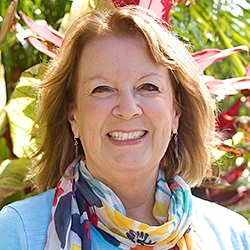

Search Results: self, and awareness
-
-
Join Jim Manske as he leads you through a self-connection exercise to guide you toward welcoming whatever enters into your awareness.
-
Here's a daily self-acceptance practice you can bring into your life whenever you are experiencing pain, tension, contraction, lack of fulfillment, or unmet needs or values. Giving your often undesired experiences space can be a path to greater inner connection and peace.
-
In moments where we would like to see change, personal growth or spiritual transformation, rather than immediately acting to make a change, Robert suggests we practice unconditional self-acceptance through a spacious presence to our inner experience. Robert asks us to give our attention and spacious awareness to our own judgments, inner contractions, and other experiences we often regard as undesirable.
-
Building your body and mind awareness can help you better regulate/calm your emotions. Regular self-empathy will help you better regulate your emotions as well as increase your body and mind awareness. If you are not aware of amygdala activation (fight/flight/freeze response), you will react instead of responding with choice. Use this eight-step process to develop your self-empathy/regulation skills.
-
Uncover self-sabotage and release unconscious contracts through empathy and neuroscience.
-
Why is it so difficult to change our patterns even when we want to, even when we experience shame or despair about them? Arnina Kashtan offers some of the common pitfalls and concrete steps to overcome them in the future.
-
Every one of us is impacted many times each day by micro-freezes that are the resulting fallout from both recent and long ago painful events. During this powerfully healing course, Sarah will walk you through a unforgettable tour of neuroscience, and succinctly demonstrate how NVC and neuroscience together can change your brain and enable your life to become both more fluid and far more resilient.
-
CNVC Certified Trainer Stephanie Bachmann Mattei leads you through an 8 minute meditation designed to develop a more integrated body and feelings/needs awareness.
-
Learn how your inner relationship forms the basis for Focusing and NVC.
-
Oren Jay Sofer explains how we can stay grounded and maintain choice during overwhelming or emotionally charged conversations. He highlights the importance of presence—feeling our feet, noticing our breath, and expanding our awareness—to counter the fight-or-flight response and self-regulate. Oren also teaches a simple three-part structure for pausing a conversation without damaging the relationship: affirm the connection, state your limit, and offer a next step. By practicing and even memorizing a short version of this framework, we can exit challenging moments with clarity, care, and self-respect.
-
Awaken your soul force and live from compassion and clarity while grounded in human needs.
-
- Deepen your capacity for self-acceptance and self-compassion
- Bring greater compassion to your relationships
- Increase your capacity for vulnerability and mourning
- Enhance your sense of trusting your own place in life, as well as your purpose
-
Trainer Tip: Have you ever noticed that some of your behaviors ensure that your needs for peace and relief won’t be met? Take judgments for instance. The more we have, the less peaceful and happy we feel.
-
Our craving for love, acceptance, and approval can lead us to show only parts of ourselves and hide others. This lack of authenticity breeds disconnection and mistrust, leading to those very needs not being met. Once I accept myself, being authentic is easier. And then people in my life can love me for who I really am, warts and all.
-
How do you know when you’re projecting disowned parts or replaying old relationship dynamics? It’s hard to know for sure, but if you find yourself upset or shutting down and unable to have a dialogue in which you can speak clearly about your feelings and needs and empathize with the other’s feelings and needs, there is likely a projection. The stronger your reaction, the more likely you are projecting.
-
Use this exercise to identify what state you're in at any moment, and as an exercise to grow capacity for self-awareness and self-compassion. Identify what happened, thoughts, sensations, feelings, longings, etc. Includes a table that outlines three states of being: Protective/Defensive, Vulnerability, Essence.
-
Let's look at the resources, awareness, and skills needed to ask for emotional attunement, celebration, relatedness, perspective, understanding, advice, and information. This includes expressing appreciation for what's supporting your needs, strengthening a sense of worthiness, and awareness of your reactivity and intention. Plus, making requests that are clear, specific, doable and creates a heart connection with others.
-
With abundant evidence that most people have unconscious biases against people --even when that bias runs counter to their own values-- there's a strong chance you recreate this disconnect with people far more often than you recognize. So even with a high degree of NVC skills you may behave in a way that seems "NVC" but also reproduces the painful patterns that marginalized people all-too-often experience. Read on for ways to transform pitfalls of NVC into more reliable connection.
-
Open your heart across differences with humility and courage as you explore new perspectives.

Quick Links
Subscription Preferences
Stay In Touch!
Looking for ways to keep up with NVC Academy news, get special offers, free resources, or words of inspiration? Here are five ways to stay engaged:



















